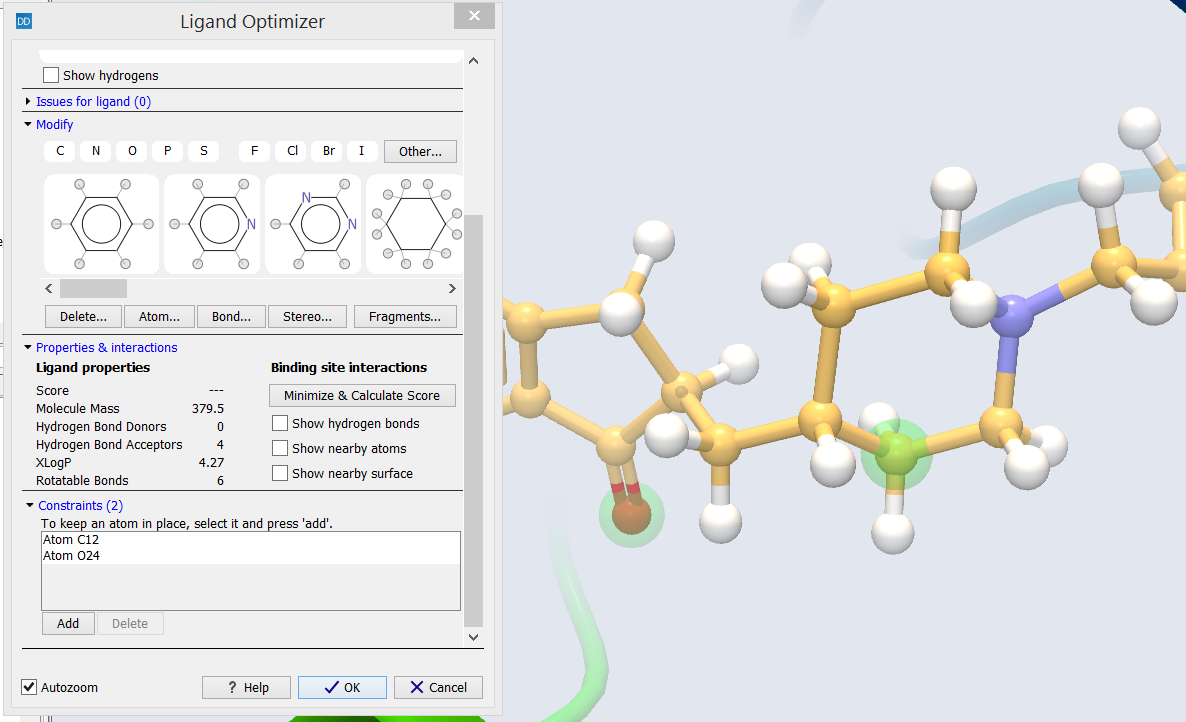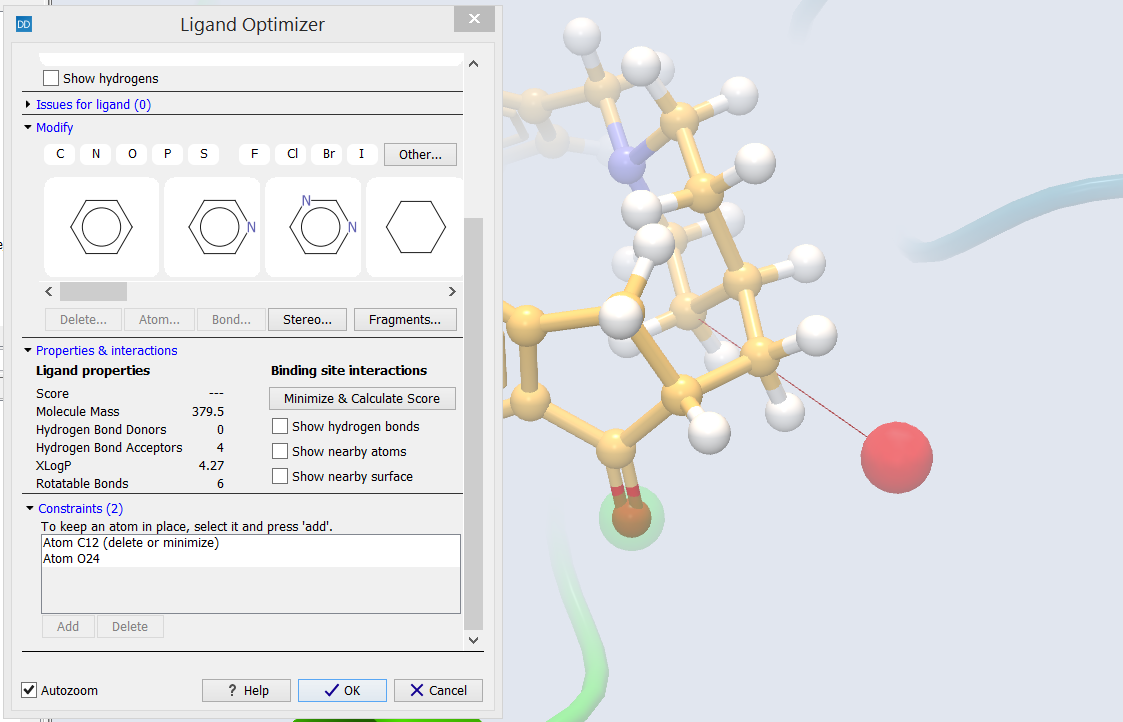The constraints panel
Selected atoms in the ligand can be constrained to their current position during optimization of the ligand. All operations, such as changing bond orders or stereochemistry, keep the constrained atoms of the ligand in place. When minimizing the score of the protein-ligand interaction, deviations from the constrained atom positions will be heavily penalized.
Constraints may be used to prevent undesired conformational changes during larger modifications of a ligand and to keep known protein-ligand interactions in place. Constraints may also be used to keep ligand atoms at otherwise unfavorable positions, for instance atoms known to covalently bind to the target receptor.
To place a constraint, select an atom, and press the "Add" button in the constraints panel. A green transparent sphere in the 3D view will indicate that the atom is constrained, and the atom name will be added to the list of constraints in the constraints panel (see figure 9.43). To delete a constraint, select it from the list in the constraints panel and press the "Delete" button.

Figure 9.43: Atoms with position constraints are marked by a green transparent sphere in the 3D view, and the atom names are listed in the constraints panel.
If multiple atom constraints are placed on a molecule, it may not be possible to satisfy all of them while modifying the ligand. In this case, some constraints may end up in an unsatisfied state. An unsatisfied constraint is shown as a red sphere at the desired atom position. A red line connects the red sphere with the constrained atom (figure 9.44). When doing a "Minimize & Calculate Score", the heavy penalty on deviations from constraints will often force the molecule back into a conformation where the constraints are satisfied. If this is not the intention, the unsatisfied constraint should be deleted from the list of constraints in the dialog before doing a minimization.

Figure 9.44: When an atom is forced away from its constrained position, a red sphere indicates the desired position, and a red line connects it visually with the atom.
Note that when minimizing the score, the penalty term from constraint violations are not included as part of the final 'Score' value. However, the 'Score' may become positive, it the constraints force the ligand into energetically unfavorable conformations.
